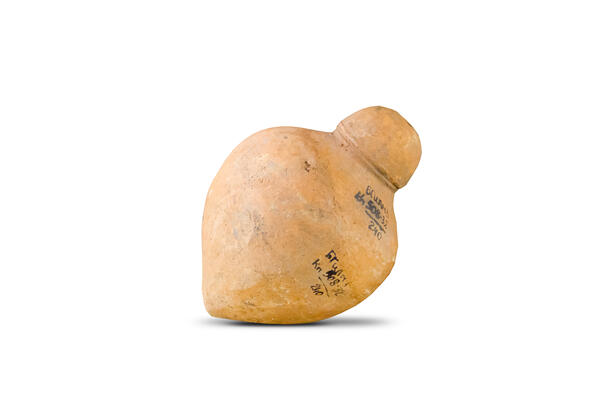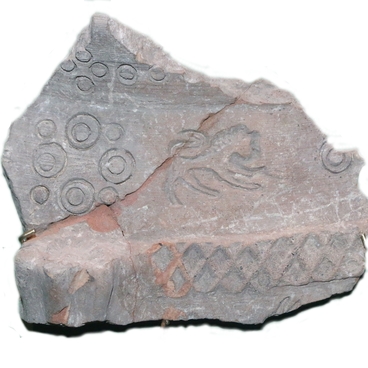The spherocone is a drop-shaped vessel with thick walls, a small narrow neck, and a tightly closed plug. The masters made it from refractory clay. The vessel wasn’t big: 12 centimeters in height and 10-15 in diameter.
In ancient Bulgaria, people made such vessels using a potter’s wheel. Working with clay, masters tried to use as little moisture as it was possible. It is believed that in this cesase vessel walls became tighter after firing. Masters created spherocon of light gray, ochre, or greenish clay. They applied a simple ornament onto a moist vessel. The patterns were scratched with special sticks or stamped with tubes of different diameters. Sometimes the pattern was applied with the help of almond-shaped or triangular seals. As a rule, Arabic script was often used on the vessels if the future owner wanted this. Masters fired the products at high temperatures.
The spherocone was the prototype of the modern vial. In the days of Volga Bulgaria, such vessels were used to store and transport expensive liquids. For example, emulsions based on mercury, various ointments, essential oils, and other volatile substances, medical solutions. Bulgarian doctors were considered among the best in the region. The physician Burhan ad-din Ibrahim ibn Yusuf al-Bulgari wrote a treatise " On Simple Medicines’, which was used by many Muslim doctors.
Similar vessels were also used in the distillation process. People placed a flask over the fire and the solution boiled in it. The steam passed through special tubes, cooled, turned back into a liquid, and flowed into the receiver. The spherocone was used both as a container for the source material and as the distillate receiver.
Vessels of this type were common in many cities and countries of the Muslim world. For example, in Egypt, the states of Central and Soviet Central Asia and the Caucasus, Crimea, as well as in the Volga region.
Some peoples used spherocones as combat grenades. A flammable liquid was poured inside, which flared up on impact. However, archaeologists have not found evidence that this was practiced in Volga Bulgaria. There are no fragments of spherocones along the fortifications, and there are no traces of combustible substances on fragments found in other places.
In ancient Bulgaria, people made such vessels using a potter’s wheel. Working with clay, masters tried to use as little moisture as it was possible. It is believed that in this cesase vessel walls became tighter after firing. Masters created spherocon of light gray, ochre, or greenish clay. They applied a simple ornament onto a moist vessel. The patterns were scratched with special sticks or stamped with tubes of different diameters. Sometimes the pattern was applied with the help of almond-shaped or triangular seals. As a rule, Arabic script was often used on the vessels if the future owner wanted this. Masters fired the products at high temperatures.
The spherocone was the prototype of the modern vial. In the days of Volga Bulgaria, such vessels were used to store and transport expensive liquids. For example, emulsions based on mercury, various ointments, essential oils, and other volatile substances, medical solutions. Bulgarian doctors were considered among the best in the region. The physician Burhan ad-din Ibrahim ibn Yusuf al-Bulgari wrote a treatise " On Simple Medicines’, which was used by many Muslim doctors.
Similar vessels were also used in the distillation process. People placed a flask over the fire and the solution boiled in it. The steam passed through special tubes, cooled, turned back into a liquid, and flowed into the receiver. The spherocone was used both as a container for the source material and as the distillate receiver.
Vessels of this type were common in many cities and countries of the Muslim world. For example, in Egypt, the states of Central and Soviet Central Asia and the Caucasus, Crimea, as well as in the Volga region.
Some peoples used spherocones as combat grenades. A flammable liquid was poured inside, which flared up on impact. However, archaeologists have not found evidence that this was practiced in Volga Bulgaria. There are no fragments of spherocones along the fortifications, and there are no traces of combustible substances on fragments found in other places.



